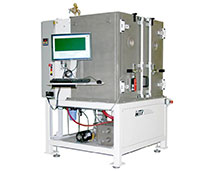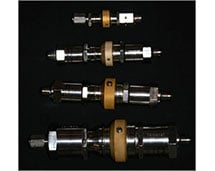Hydraulic Pressure Cycle and Burst Test Stands
Genuen offers fully automated, high-pressure burst testers capable of safely performing both destructive and non-destructive pressure testing.
We have developed hydraulic pressure testing equipment with air at pressures up to 2,000 PSI and oil/water at pressures up to 60,000 PSI on single parts as well as multiple parts individually controlled.
Our INERTIATM test software allows the operator to configure and operate the hydraulic test stand through intuitive, battle-tested, user-interface screens.
Burst enclosures are designed for each system to accommodate your individual needs, varying from simple plate steel boxes to dual-walled, sand-filled enclosures.


What are the pros and cons of a manually-operated system?
Manually-operated systems require a technician to mount the DUT and slowly increase pressure with a knob. Manual systems can make sense where control accuracy and recording test conditions are not high priorities, where there is high variability in the kinds of tests being performed, or where a simple go/no-go result is desired. Simpler requirements make these systems popular in smaller MRO facilities. Additionally, technicians can create novel tests on-the-fly by turning knobs however makes sense in the moment.
When should I consider a PLC-based system?
PLC-based systems offer automation in clamping, submersion, rotation, and pressure increase, improving accuracy and repeatability over manual systems. PLC-based systems feature a simple HMI (Human Machine Interface) screen, do not typically record data at rates faster than 10 Samples/s, and can make sense when types of test are limited (usually to 1 test), are highly repeatable, and do not require high-speed data acquisition.
What are the advantages of a Real-Time, PC-based system?
Real-Time PC-based systems offer faster control and sampling rates (via the Real-time system) and more advanced user interfaces (via the PC). In addition to faster sampling, which enables better control, measurement resolution is typically better as well. For example, 16-bit measurements are sixteen times more precise than 12-bit readings. Real-time control means fast response times. Sampling rates can exceed 10,000 Samples/s per channel. Advanced user interfaces offer virtually unlimited test profiles, which can be pre-defined and uploaded. Lastly, advanced user interfaces typically include a “manual control screen” for operating the equipment as if it were in manual mode.



